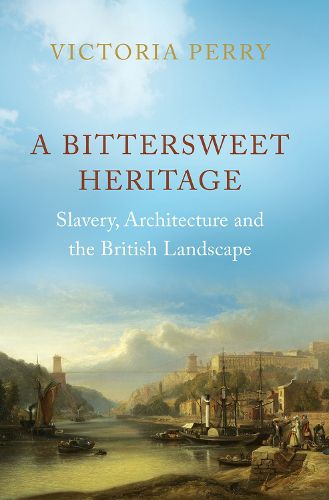Readings Newsletter
Become a Readings Member to make your shopping experience even easier.
Sign in or sign up for free!
You’re not far away from qualifying for FREE standard shipping within Australia
You’ve qualified for FREE standard shipping within Australia
The cart is loading…






The 2020 toppling of slave-trader Edward Colston’s statue by Black Lives Matter protesters in Bristol was a dramatic reminder of Britain’s role in trans-Atlantic slavery, too often overlooked. Yet the legacy of that predatory economy reaches far beyond bronze memorials; it continues to shape the entire visual fabric of the country.
Architect Victoria Perry explores the relationship between the wealth of slave-owning elites and the architecture and landscapes of Georgian Britain. She reveals how profits from Caribbean sugar plantations fed the opulence of stately homes and landscape gardens. Trade in slaves and slave-grown products also boosted the prosperity of ports like Bristol, Liverpool and Glasgow, shifting cultural influence towards the Atlantic west. New artistic centres like Bath emerged, while investment in poor, remote areas of Wales, Cumbria and Scotland led to their ‘re-imagining’ as tourist destinations: Snowdonia, the Lakes and the Highlands. The patronage of absentee planters popularised British ideas of ‘natural scenery’–viewing mountains, rivers and rocks as landscape art–and then exported the concept of ‘sublime and picturesque’ landscapes across the Atlantic.
A Bittersweet Heritage unearths the slavery-tainted history of Britain’s manors, ports, roads and countryside, and powerfully explains what this legacy means today.
$9.00 standard shipping within Australia
FREE standard shipping within Australia for orders over $100.00
Express & International shipping calculated at checkout
The 2020 toppling of slave-trader Edward Colston’s statue by Black Lives Matter protesters in Bristol was a dramatic reminder of Britain’s role in trans-Atlantic slavery, too often overlooked. Yet the legacy of that predatory economy reaches far beyond bronze memorials; it continues to shape the entire visual fabric of the country.
Architect Victoria Perry explores the relationship between the wealth of slave-owning elites and the architecture and landscapes of Georgian Britain. She reveals how profits from Caribbean sugar plantations fed the opulence of stately homes and landscape gardens. Trade in slaves and slave-grown products also boosted the prosperity of ports like Bristol, Liverpool and Glasgow, shifting cultural influence towards the Atlantic west. New artistic centres like Bath emerged, while investment in poor, remote areas of Wales, Cumbria and Scotland led to their ‘re-imagining’ as tourist destinations: Snowdonia, the Lakes and the Highlands. The patronage of absentee planters popularised British ideas of ‘natural scenery’–viewing mountains, rivers and rocks as landscape art–and then exported the concept of ‘sublime and picturesque’ landscapes across the Atlantic.
A Bittersweet Heritage unearths the slavery-tainted history of Britain’s manors, ports, roads and countryside, and powerfully explains what this legacy means today.